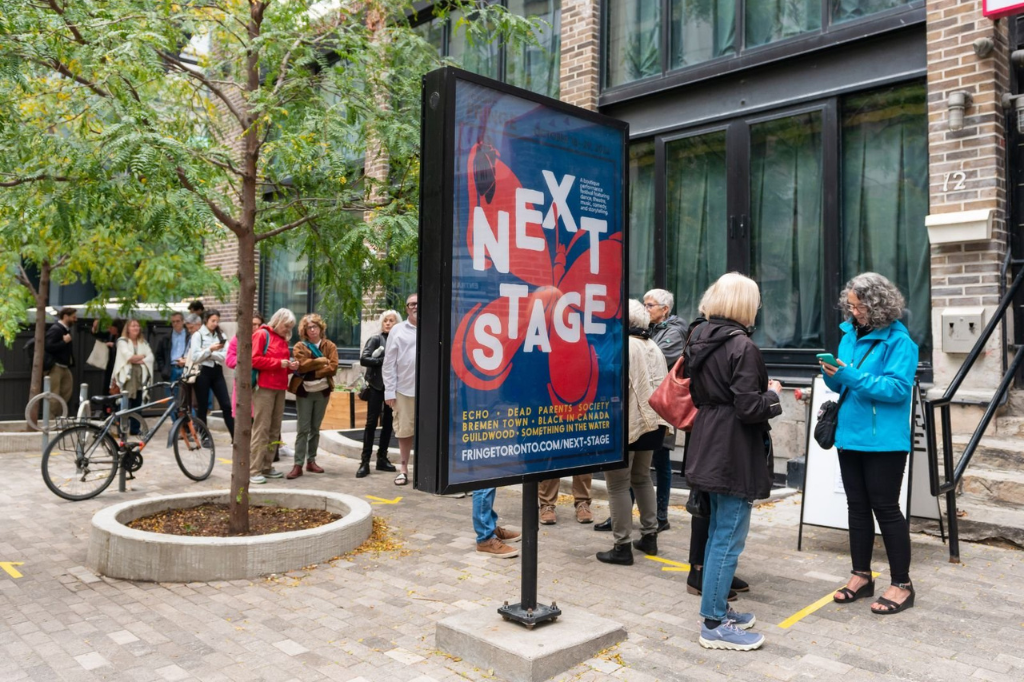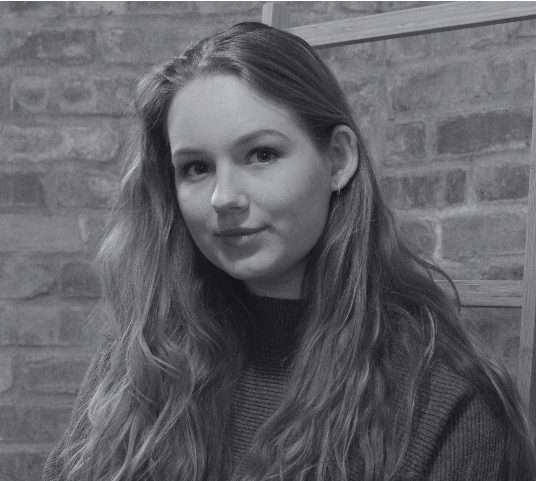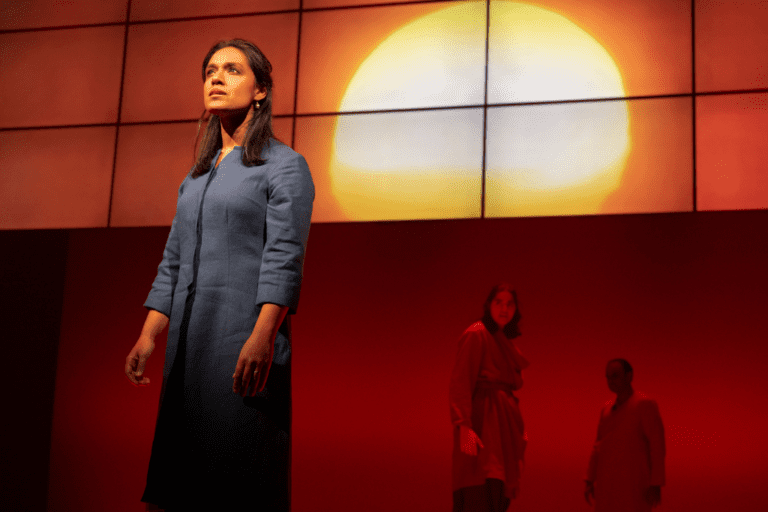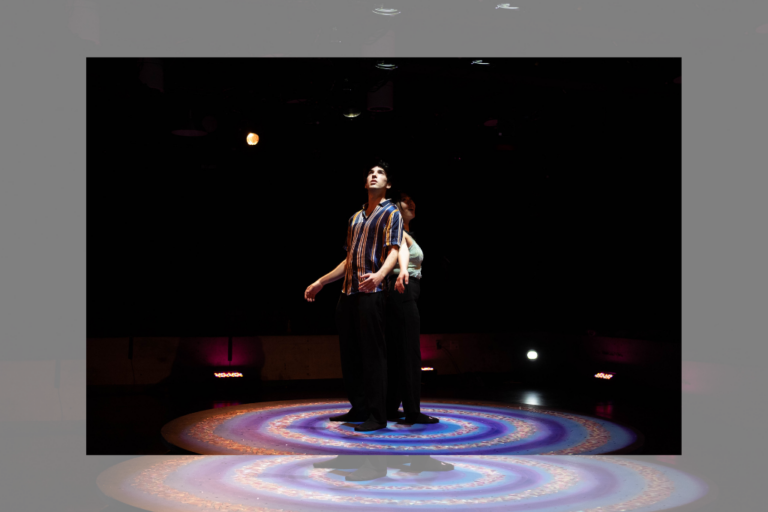Beyond the Fringes: Next Stage guides artists into creative control
The Toronto Fringe Festival is a household name for local theatregoers and anyone passing a lamppost downtown in July. But Fringe is more than those jam-packed two weeks in the summertime; it produces another platform for artists finding their audiences in the off-season.
On October 18, the Next Stage Theatre Festival kicked off its long-anticipated 16th season, extending the reach of the Toronto Fringe as a community hub of arts excitement. Taking inspiration from a butterfly emerging from its cocoon, this year’s Next Stage marketing was laden with colourful depictions of metamorphosis communicating the festival’s motivation: to offer developing artists mentorship and resources as they grow their wings.
Next Stage bridges the gap for emerging artists between smaller opportunities and genuine bargaining power in their creative endeavours and careers.
Instead of the traditional Fringe lottery model, Next Stage utilizes a jury selection process. This year’s festival featured six dynamic works that, although distinct in their approaches to storytelling, treated a cross-section of issues on the forefront of our collective consciousness. As artists experimented with form and design, the festival compelled audiences to reconsider the boundaries of traditional performance. From dance and sketch comedy, to musicals and squid genitals, this lineup truly guaranteed something for everyone.
In conversation, the Fringe’s outgoing executive director Lucy Eveleigh and inaugural content coordinator Oliver Pitschner were excited to share this programming with the public. Eveleigh outlined that each year “what [the jury is] looking for is the storytelling… what is current, what is relevant,” and while they will usually seek out a musical and movement piece, they look for a bit of everything. What united this year’s pieces, Pitschner said, is a “ribbon of quality” as well as some shared themes.
All six pieces explored, in their own way, our relationships to identity and community. How do we engage with society, and what do we learn about ourselves in the process?
For Eveleigh this connection was evidence of “what people are talking about and what’s important to them.” Perhaps as the world recovers from a few years of isolation there’s a collective need to question what it means to belong, and how we decide who does.
Speaking of the festival’s place in Toronto theatre, both Eveleigh and Pitschner communicated a dedication to cultivating community.
Eveleigh explained that her approach involves direct conversations with chosen companies about their specific goals and values in order to hone in on “what people want to get out of this festival so we can offer that as best as possible.” She recognizes that theatre is a daunting industry to break into and wants to leverage her connections to welcome new blood.
Visual artist and emerging arts administrator Pitschner is focused on bringing in and growing the Fringe’s audience. As content coordinator, his role not only ensures that the Fringe is always on your social feeds, but that there’s a cohesion between what you see onscreen and onstage. Pitschner is the talented illustrator behind Next Stage’s hand-drawn butterfly and cocoon motif. He says that “as long as people see it, and think it looks cool, I’ll have done my job.”
When we spoke on October 19th, Pitschner was personally looking forward to The Disability Collective’s ASL-interpreted Rocky Horror Picture Show on October 28. “I’ve been a Rocky Horror-goer since I was 16 years old,” he said. “Every single year I dress up.” He appreciates that “a community minded festival” like Next Stage includes ancillary programming for those who may not consider themselves a traditional theatregoer.
Partnering with the Toronto Alliance for the Performing Arts (TAPA), the Toronto Fringe also hosts a variety of workshops for independent artists, including one as part of Next Stage focused on respecting mental health in artistic careers. The workshop outlined resources and strategies to help take care of ourselves and our peers in this industry.
As someone relatively new to the city, I have sometimes found the Toronto theatre world insular. I deeply appreciate the Fringe’s creation of a space for artistry and connection for those who feel on the scene’s fringes — pun intended.
Fringe is an organization which truly allows artists to make necessary mistakes. It’s an indispensable safe space for art makers, workers, and lovers to gain valuable learning experience. At Fringe, everyone is capable of art.
That being said, because the summertime Fringe festival is an opportunity to welcome everyone, it can be an overwhelming experience. One hundred-plus shows move quickly in and out of limited venue space while audiences clamour to fit as many shows as they can into their schedule.
Next Stage, then, is an approachable, intimate middle ground between more well-established theatres and the free-for-all of the Fringe. It features “programming that is… artistically rich while not alienating to folks who aren’t already in this scene,” said Pitschner.
Eveleigh, who is leaving the Fringe at the end of the year after 12 years with the organization, is sure of one thing: “The Fringe is becoming so much more sure of itself and its place in this city and beyond, and isn’t backing down from that.” She embraces change knowing that new ideas will always be the future of Fringe.
And the Fringe’s doors are open! Always looking for new patrons, volunteers, and lottery applicants, the Fringe welcomes everyone to get involved and say hi. If you have a show to submit (or just need a reason to get started), and think you’re too small a fish for this pond, both Eveleigh and Pitschner stress that “Fringe is for YOU.”
Next Stage Theatre Festival ran from October 18 to 29 at Buddies in Bad Times Theatre. You can learn more about the festival here.










Comments